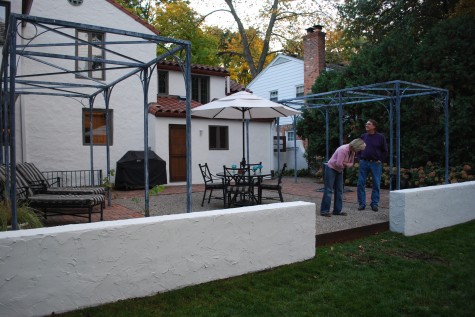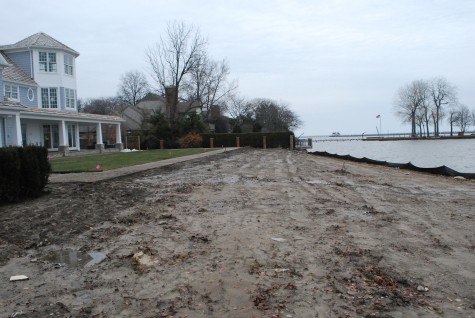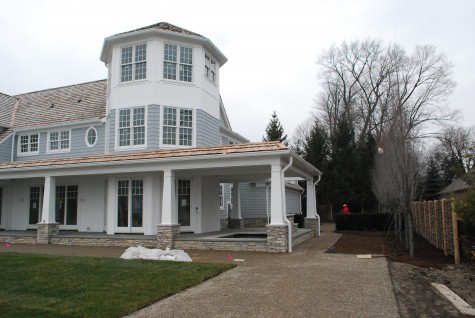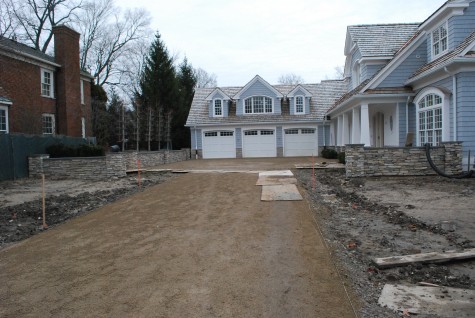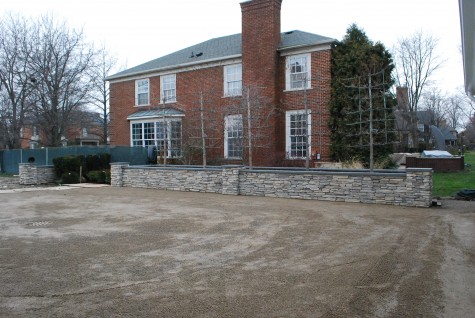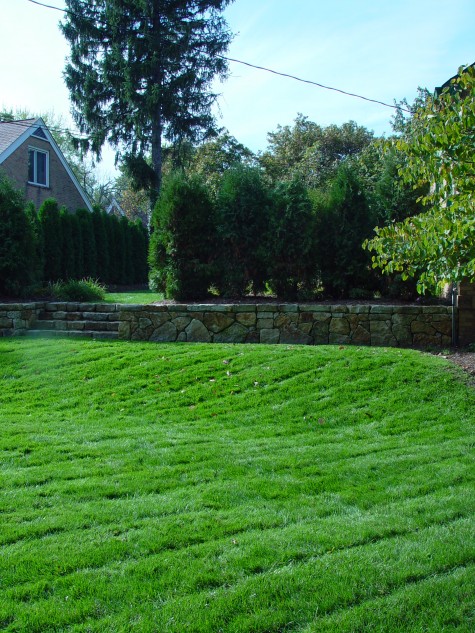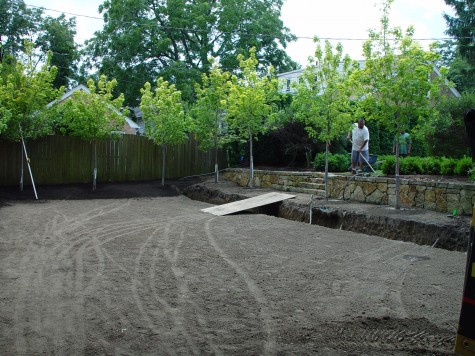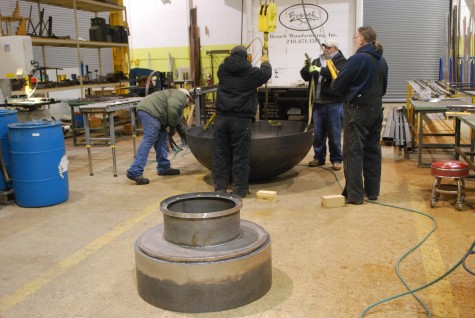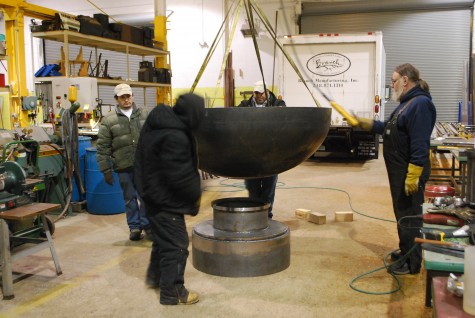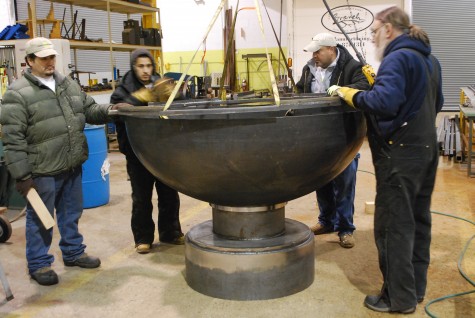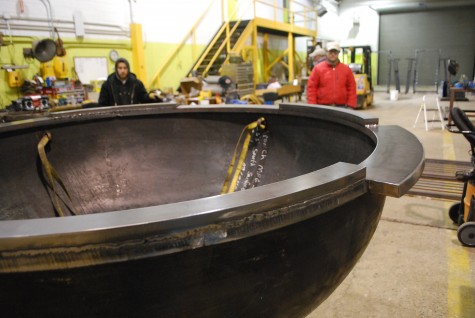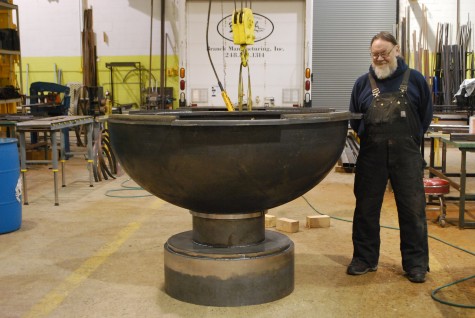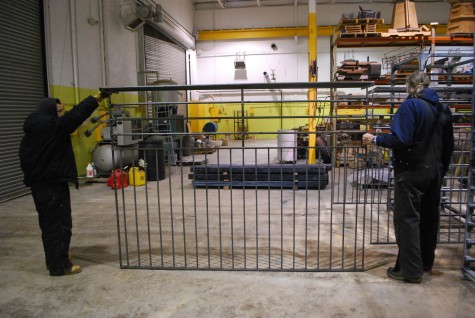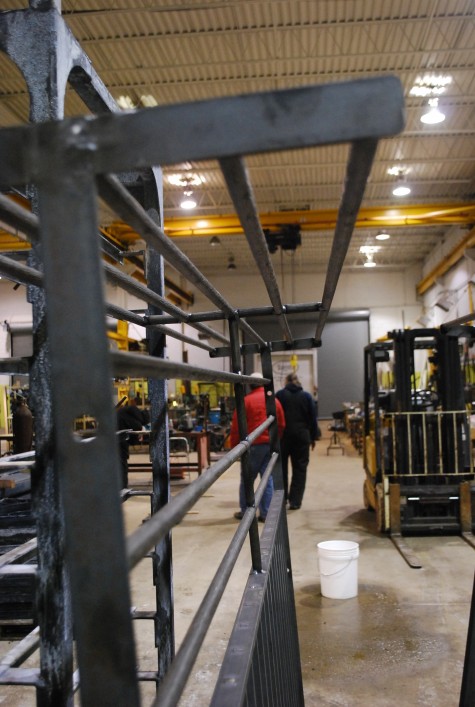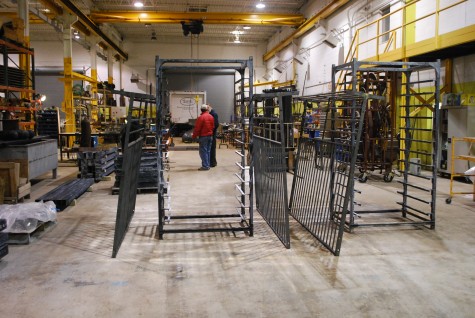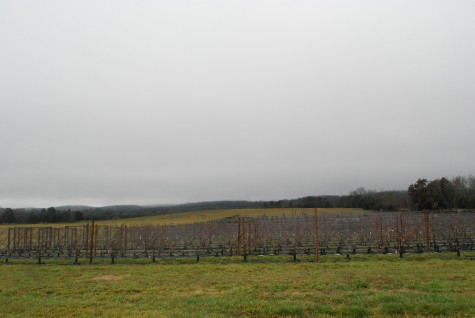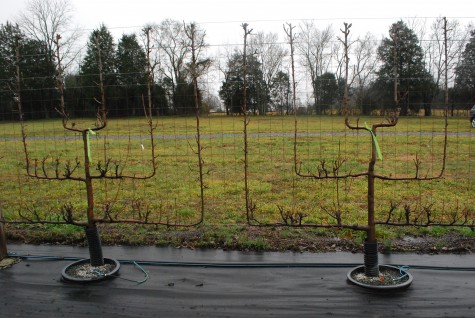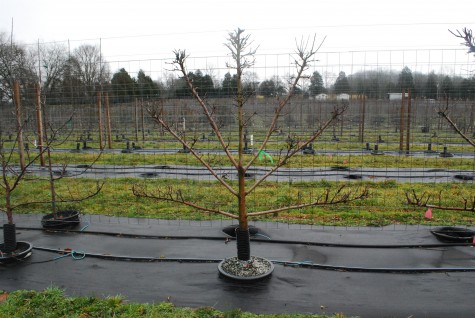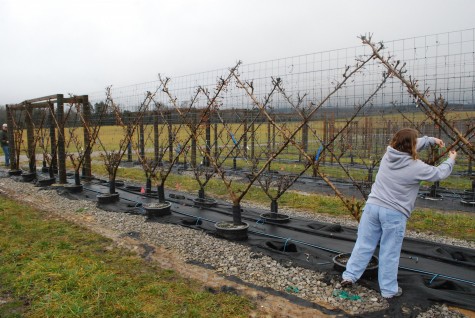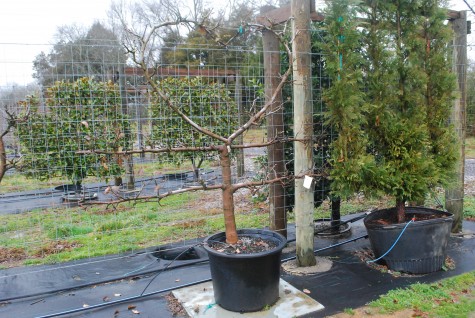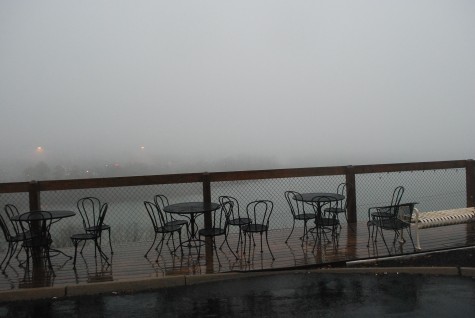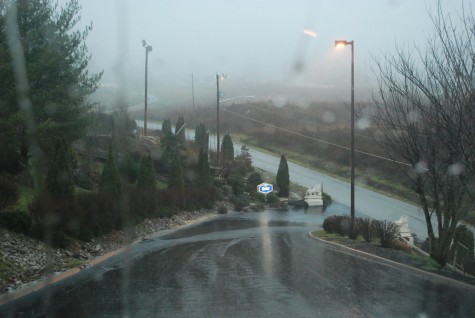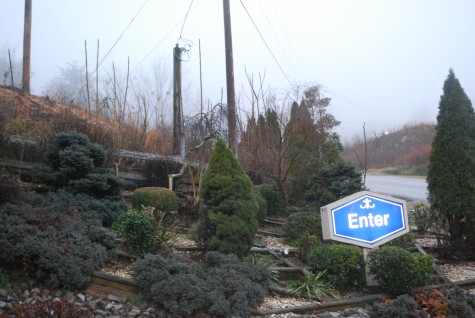The winter is a perfect time to discuss what goes into a coherent landscape plan. If you have a mind to make some changes, plan now. Draw now. Search for the right clematis now. Read the seed catalogues now. Be ready, when the season turns. A hard and thoughtful look at a landscape now is perfect-most of all that is visible now are the bones. A good landscape begins with great bones. No matter what style of gardening appeals to you, the bones tell the entire story in a simple and spare way. In a way, your landscape is a narrative you imagine, write, and bring to life. My first look at a landscape design revolves around the shape of the land into and onto which that landscape will be built. Why this picture? The path across a steep slope is set on a wee bit of level ground. Getting from here to over there is easy. That path leads the eye to believe there is something ahead worth visiting.
This house is set high off the existing ground. Old brick walks contained by pressure treated lumber make the transition from the house to the yard in a very awkward and fussy way. There are small bits of level-nothing of a size that would permit company. The lounge is set in a barked bed, and slants down from head to toe.
A new landscape sets the brick wings, and a gravel inner terrace at one step out of the back door. All three areas set at the same grade creates a flat surface large enough for people to congregate. This makes carrying a tray of burgers outside to the grill easy and manageable. We prolonged the big step down into the yard until the last moment-post terrace. A riser of 1/4 inch thick steel retains the gravel, while a pair of stucco walls are set at a height convenient for sitting.
Level ground is friendly to people. 1 person, or a group of people makes no difference. People are comfortable on the level ground in a landscape. Would you choose to sit on this left bench, given the choice? Looks dicey, doesn’t it? It looks for all the world ready to pitch forward and fall over. The right bench-solid, sturdy, and inviting. It is set level with the horizon. Worrying about one’s footing is not my choice for a garden activity.
This new house and landscape has been in progress for about 6 months. The fall rain was relentless. But this picture makes clear that the lawn panel framed with gravel is a level space. Many of yards of soil were involved in creating this level place. The land drops to the water’s edge past that panel. The level lawn panel-easy on the eyes and the legs. The slope to the water-a journey.
The level lawn panel made for a drop off to the property line. My idea here-every place that I would expect traffic, gathering, use and community needs to be level. The lower slopes got drains, for the columnar maples. My idea here-one step out of the house, and one step off of the house terrace to the yard makes for a simple experience of the landscape.
This level idea carried across the width of the back of the house meant a significant drop to the street. Not all spaces need to be level, least of all this one. The yew hedges set considerably above the street grade provide my client with lots of privacy. The big idea here? The ground can be sculpted and shaped. Up or down. Flat or hilly. This property had been a field for 20 years, so the property could be graded all of a piece with relative ease.
The decomposed granite drivecourt is level with the entrance to the garages. Level to the eye, that is. A drivecourt needs to drain, to the center of that court. It furthermore needs to drain to the street. Not everything is apparent to the eye-most landscape companies use transits to determine the rate and the extent of fall to make sure water does not collect. Water sitting on a driveway or terrace is a nuisance in a rain storm, and can be treacherous if it freezes.
This drivecourt looks flat. The drop to a center drain is very subtle indeed. A slight drop to drain away water is about the science, not the view.
My property came with a giant drop in the side yard. One year I sprung for a single retaining wall to make that slope easier to negotiate.
The next year, a reworking of the ground for a second level terrace. A generous landing and stairs with deep treads makes it easy for me to get from one place to the other.
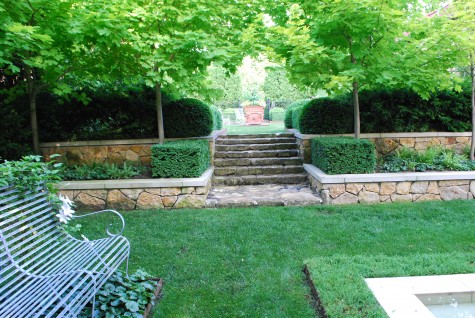
Now I have a well defined lower level flat space, an upper level flat space, and a staircase that gets me from one place to the other. Level I like.


